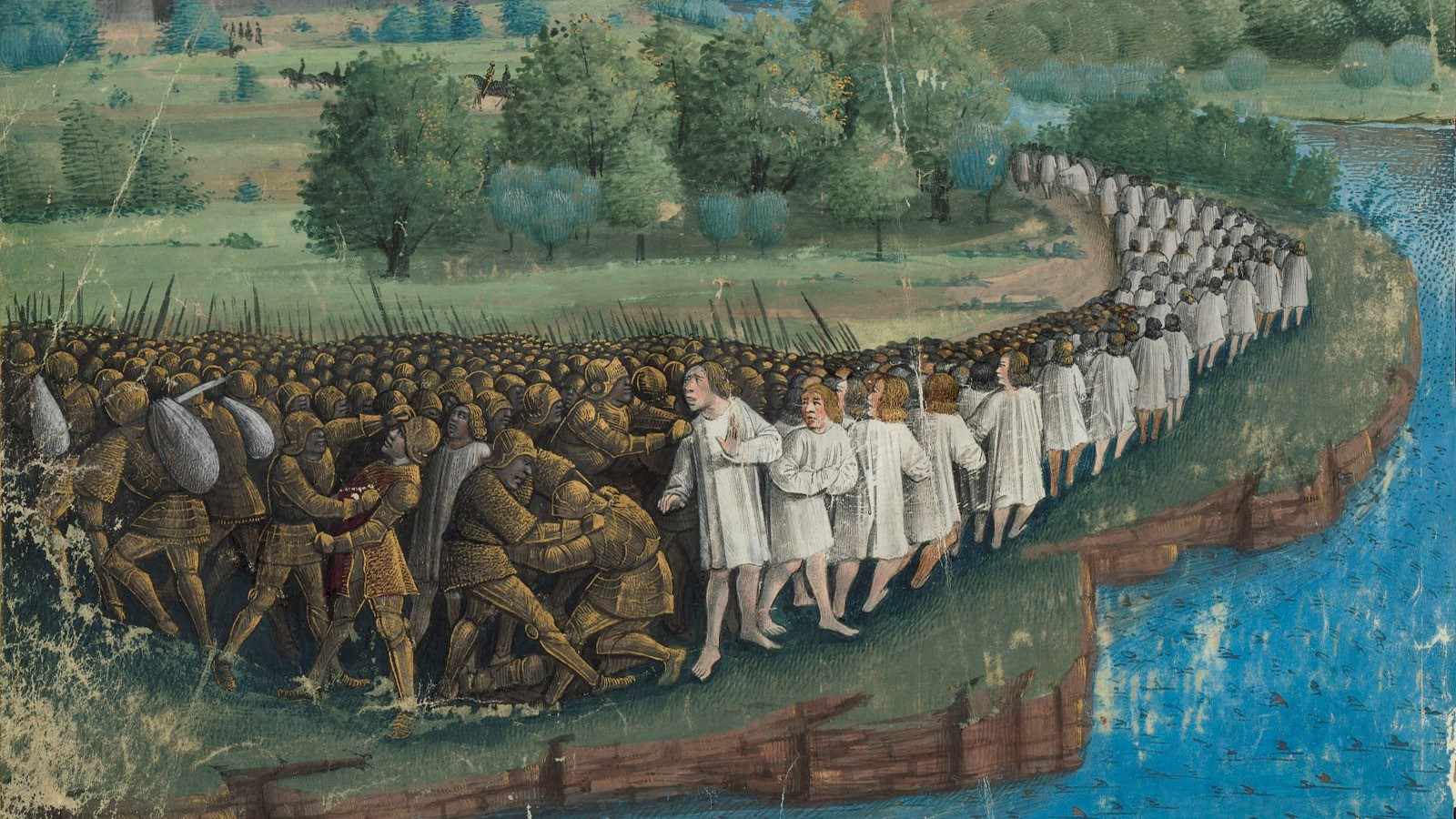
Curious about the Crusades? These historical campaigns have intrigued scholars and history buffs alike for centuries. Spanning from the late 11th to the late 13th centuries, Crusades were military expeditions initiated by the Latin Church to reclaim Jerusalem and other holy lands from Muslim control. But there's so much more to these events than just battles and conquests. From the motivations behind them to the impact they had on the world, each fact about the Crusades offers a glimpse into a complex period of human history. Whether you're a student, educator, or just someone with a keen interest in history, understanding these 50 facts will provide a comprehensive overview of the Crusades, shedding light on the reasons, outcomes, and lasting effects of these pivotal moments in time.
The Origin of the Crusades
The Crusades were a series of religious wars initiated by the Latin Church in the medieval period. They aimed to recover the Holy Land from Muslim rule. Here are some fascinating facts about their origin.
- The First Crusade began in 1096 after Pope Urban II's call to arms at the Council of Clermont in 1095.
- The term "Crusade" comes from the Latin word "crux," meaning cross, symbolizing the Christian cause.
- The primary goal was to reclaim Jerusalem, considered sacred by Christians, Muslims, and Jews.
- The Byzantine Empire requested help from the West to fend off Turkish advances, sparking the First Crusade.
- Crusaders were promised indulgences, or forgiveness of sins, for their participation.
Key Figures in the Crusades
Several notable figures played crucial roles in the Crusades. Their actions and decisions shaped the course of these wars.
- Pope Urban II, who initiated the First Crusade, was a pivotal figure in rallying European Christians.
- Richard the Lionheart, King of England, led the Third Crusade and became legendary for his bravery.
- Saladin, the Muslim leader, recaptured Jerusalem in 1187, becoming a hero in the Islamic world.
- Godfrey of Bouillon, a leader of the First Crusade, became the first ruler of the Kingdom of Jerusalem.
- Eleanor of Aquitaine, one of the few women to participate, joined the Second Crusade alongside her husband, King Louis VII of France.
Major Battles and Sieges
The Crusades were marked by numerous battles and sieges, each with significant consequences.
- The Siege of Antioch (1097-1098) was a crucial victory for the Crusaders during the First Crusade.
- The Battle of Hattin (1187) led to the Muslim recapture of Jerusalem under Saladin.
- The Siege of Acre (1189-1191) was a pivotal battle during the Third Crusade, resulting in a Crusader victory.
- The Battle of Arsuf (1191) saw Richard the Lionheart defeat Saladin's forces.
- The Fourth Crusade (1202-1204) infamously ended with the sack of Constantinople, a Christian city.
The Impact on Europe and the Middle East
The Crusades had lasting effects on both Europe and the Middle East, influencing culture, politics, and society.
- The Crusades helped to end feudalism in Europe by redistributing land and wealth.
- They facilitated the exchange of knowledge, including advances in medicine, science, and technology.
- Trade routes between Europe and the Middle East expanded, boosting economic growth.
- The Crusades led to increased tensions between Christians and Muslims, which persist to this day.
- Many European castles and fortifications were built or improved due to Crusader influence.
Religious and Cultural Influence
The religious and cultural impact of the Crusades was profound, shaping beliefs and practices for centuries.
- The Crusades strengthened the power and influence of the Catholic Church.
- They inspired the creation of military orders like the Knights Templar and the Knights Hospitaller.
- Crusader states in the Holy Land adopted a mix of European and Middle Eastern cultures.
- The concept of "holy war" became more ingrained in Christian theology.
- The Crusades influenced literature, with works like "The Song of Roland" celebrating Crusader heroes.
The Legacy of the Crusades
The legacy of the Crusades is complex, with both positive and negative aspects that continue to be debated.
- The Crusades are often seen as a precursor to European colonialism.
- They contributed to the development of chivalry and knightly ideals.
- The Crusades left a lasting architectural legacy, with many churches and castles still standing.
- They are remembered in both Western and Islamic histories, often with differing perspectives.
- The Crusades have been romanticized in popular culture, from novels to films.
Unusual and Lesser-Known Facts
Beyond the well-known events and figures, the Crusades are full of surprising and lesser-known facts.
- Some Crusaders wore distinctive crosses on their clothing to signify their mission.
- The Children's Crusade of 1212 involved thousands of children attempting to reach the Holy Land, ending in disaster.
- The Crusades saw the use of early forms of gunpowder weapons by both sides.
- Many Crusaders never reached the Holy Land, perishing from disease or in battles along the way.
- The Crusades led to the creation of new religious relics, believed to have miraculous powers.
The End of the Crusades
The Crusades eventually came to an end, but their influence lingered on in various ways.
- The fall of Acre in 1291 marked the end of the Crusader states in the Holy Land.
- The later Crusades, such as the Ninth Crusade, were less successful and poorly organized.
- The Reconquista in Spain, aimed at reclaiming territory from Muslims, was partly inspired by the Crusades.
- The spirit of the Crusades continued in various military campaigns against non-Christians in Europe.
- The Crusades left a legacy of religious intolerance and conflict that echoes through history.
Modern Perspectives on the Crusades
Today, historians and scholars continue to study and reinterpret the Crusades, offering new insights and perspectives.
- Modern historians view the Crusades as a complex mix of religious fervor, political ambition, and economic gain.
- Some scholars argue that the Crusades were as much about internal European politics as they were about the Holy Land.
- The Crusades are often studied in the context of medieval European expansionism.
- Contemporary debates focus on the ethical implications and motivations behind the Crusades.
- The Crusades are used as a reference point in discussions about modern religious and cultural conflicts.
Fun Facts About the Crusades
Despite their serious nature, the Crusades also have some quirky and fun facts that might surprise you.
- Some Crusaders brought back exotic pets like monkeys and parrots from the Middle East.
- The word "Crusader" has been used in modern times to describe someone on a passionate mission.
- Crusader knights often wore elaborate armor, which could weigh up to 60 pounds.
- The Crusades inspired many medieval legends and myths, some of which persist today.
- The Crusades have been depicted in numerous video games, bringing this historical period to life for new generations.
A Final Look at the Crusades
We've journeyed through time, uncovering 50 facts about the Crusades, a series of religious wars that have left an indelible mark on history. From the fervent zeal of the crusaders to the complex interplay of politics, religion, and culture, these events shaped the medieval world and beyond. Understanding the Crusades gives us insight into the power of belief and the consequences of conflict. It's a reminder of humanity's capacity for both great faith and great folly. As we reflect on these historical episodes, let's consider the lessons they teach us about tolerance, understanding, and the importance of coexisting peacefully. History, with all its complexities, continues to offer valuable lessons for today and the future. Let's keep exploring, learning, and growing from the past.
Was this page helpful?
Our commitment to delivering trustworthy and engaging content is at the heart of what we do. Each fact on our site is contributed by real users like you, bringing a wealth of diverse insights and information. To ensure the highest standards of accuracy and reliability, our dedicated editors meticulously review each submission. This process guarantees that the facts we share are not only fascinating but also credible. Trust in our commitment to quality and authenticity as you explore and learn with us.


